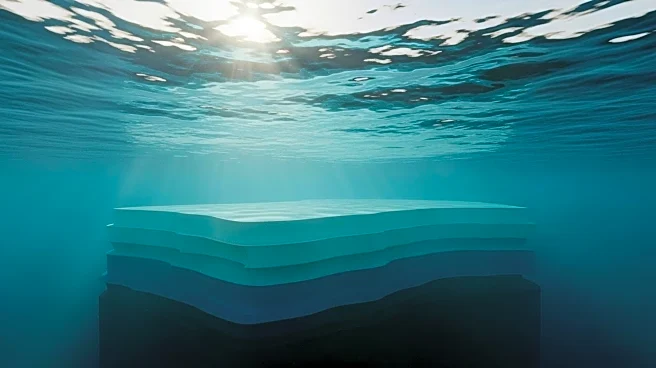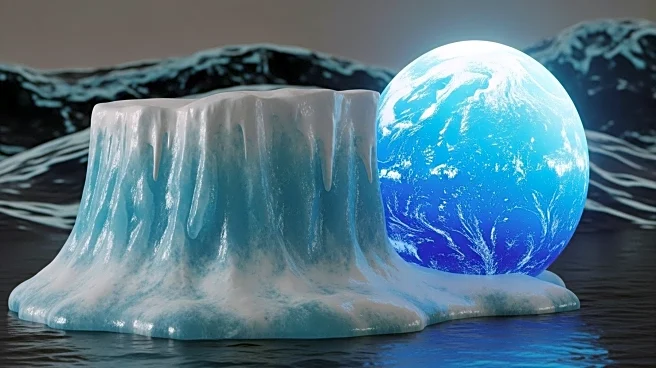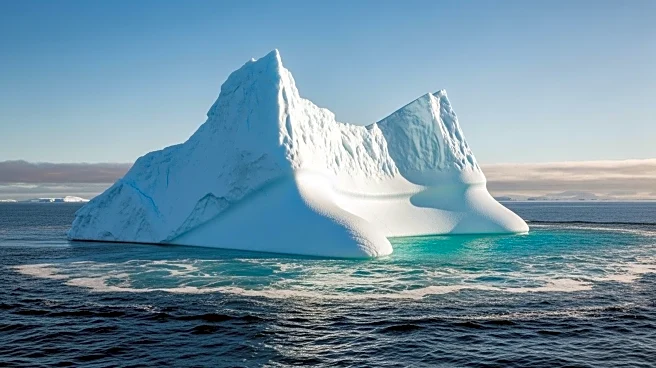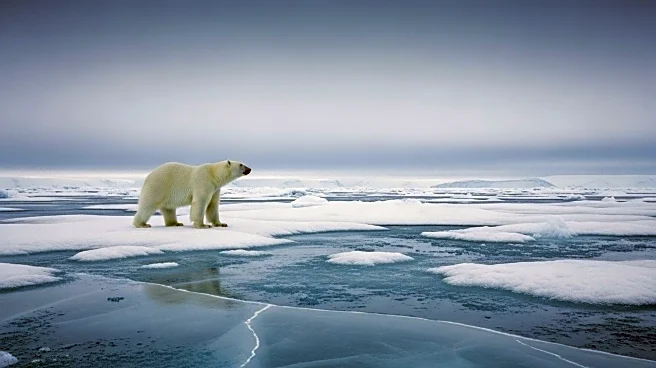What's Happening?
A study conducted by Umeå University has discovered that ice can dissolve iron minerals more effectively than liquid water, leading to Arctic rivers turning rusty orange as permafrost thaws. The research, published in PNAS, challenges the belief that frozen environments slow chemical reactions. Ice at minus ten degrees Celsius releases more iron from minerals than liquid water at four degrees Celsius. This process is facilitated by microscopic pockets of liquid water between ice crystals, which act as chemical reactors. The study focused on goethite, an iron oxide mineral, and found that freeze-thaw cycles enhance iron dissolution. The findings are significant for acidic environments, such as mine drainage sites and acid sulfate soils.
Why It's Important?
The study's findings have implications for water quality and aquatic ecosystems in Arctic regions. As climate change increases freeze-thaw cycles, more iron is released into water systems, potentially affecting vast areas. This could lead to changes in the natural cycling of elements and impact ecosystems. Understanding these processes is crucial for predicting environmental changes and managing water resources in polar and mountain regions. The research highlights the active role of ice in chemical reactions, which could influence future studies on climate change and its effects on natural environments.
What's Next?
Further research is needed to determine if the same dissolution process applies to all iron-bearing ice. The ongoing studies in the Boily laboratory aim to explore this possibility. As climate change continues to affect freeze-thaw cycles, scientists will likely focus on understanding the broader environmental impacts and developing strategies to mitigate negative effects on ecosystems. Policymakers and environmental groups may use these findings to advocate for climate action and conservation efforts in affected regions.
Beyond the Headlines
The study raises questions about the long-term impact of increased iron dissolution on Arctic ecosystems. The interaction between iron minerals and organic compounds in acidic environments could lead to unforeseen changes in water chemistry and biodiversity. Ethical considerations may arise regarding the responsibility to protect vulnerable ecosystems from climate-induced changes. The research also underscores the importance of interdisciplinary approaches in studying complex environmental processes.











